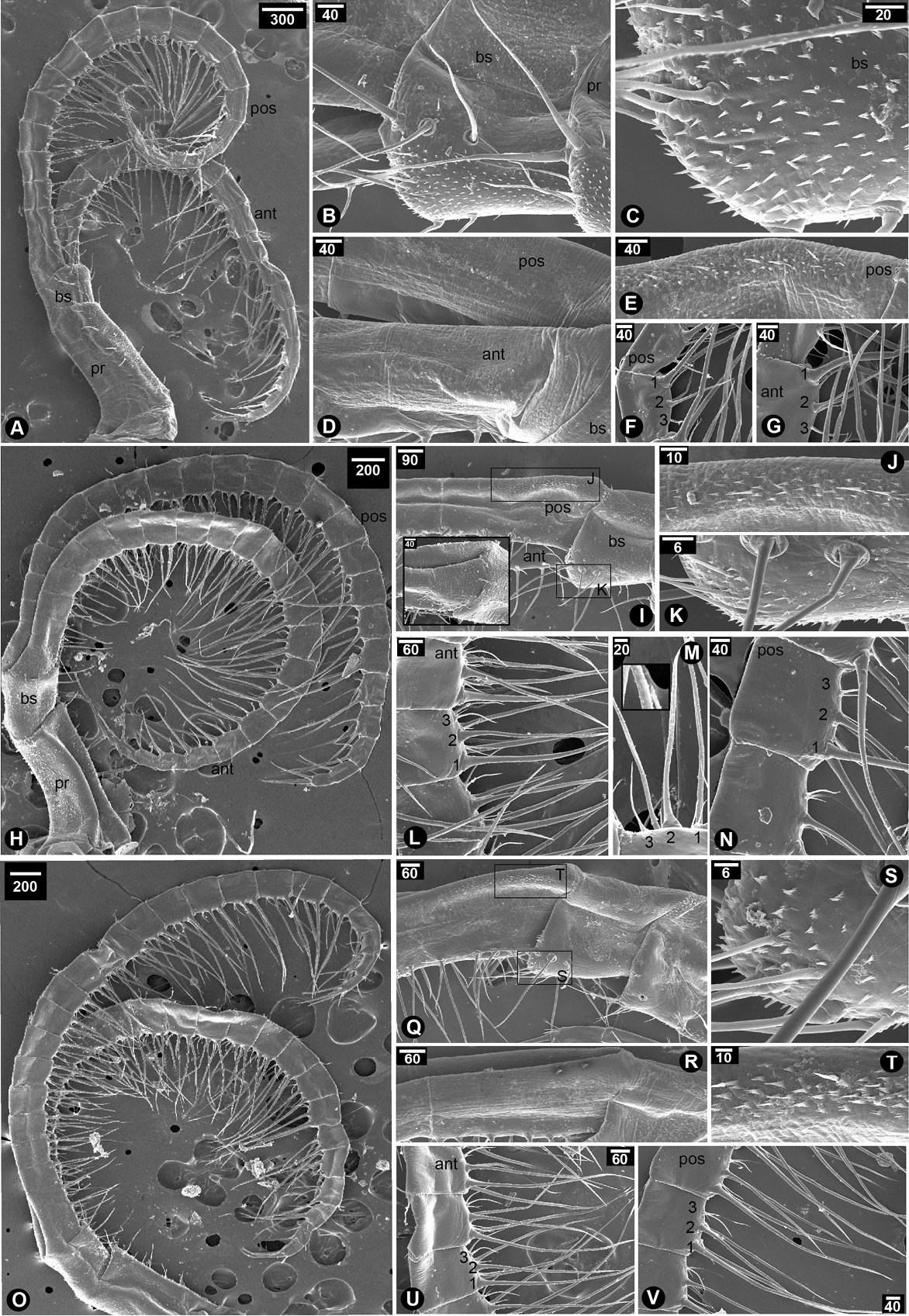
|
||
|
SEM showing cirral morphology of Neonrosella vitiata (Darwin, 1854) A–G cirrus IV A overview of cirrus IV morphology B close-up at basis and protopod C basipod with spines D greater curvature of both rami E close-up on spines on posterior ramus F lesser curvature of posterior ramus (1, 2 and 3 indicating first pair of long serrulated setae-longest, second pair of serrulated setae-second longest and third pair of simple setae-shortest, respectively) G lesser curvature of anterior ramus (number described as F) H–N cirrus V H overview of cirrus V morphology I proximal region showing greater curvature of both rami J close-up on greater curvature of posterior ramus carrying spines K basipod with spines L lesser curvature of anterior ramus M close-up on a segment on lesser curvature of anterior ramus showing type of setae (inset showing serrulated setae and number as described in F) N lesser curvature of posterior ramus (number as described in F) O–V cirrus VI O overview of cirrus VI morphology Q greater curvature of posterior ramus R greater curvature of both rami S basipod with spines T close-up on spines on posterior ramus U lesser curvature of anterior ramus V lesser curvature of posterior ramus (number described as F). Abbreviations: pr, protopod; bs, basipod; pos, posterior ramus; ant, anterior ramus. Scale bars in µm. |